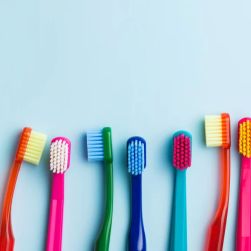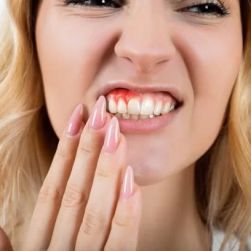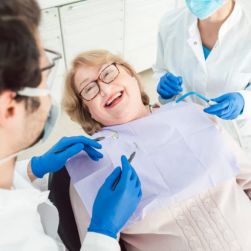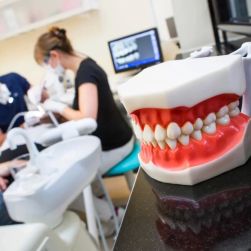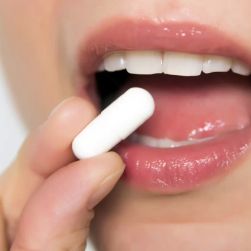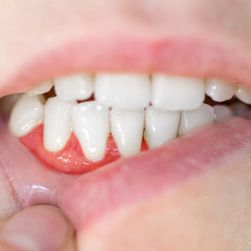First Aid for a Dislocated Jaw: How to Handle a Medical Emergency Effectively
As I stood there, frozen with concern, I watched a close friend of mine grimace in pain after a sudden accident. We were playing a friendly game of basketball when he collided with another player. In an instant, he was holding his mouth and jaw, unable to speak without wincing. His jaw was visibly out of place, and I knew that what we were witnessing was a dislocated jaw. As someone who has learned the importance of first aid in such situations, I quickly took action, hoping to minimize his discomfort and prevent further injury.
What is a Dislocated Jaw?
A dislocated jaw occurs when the lower jaw (mandible) detaches from its normal position in the temporomandibular joint (TMJ), the joint that connects the jaw to the skull. This condition can cause severe pain, difficulty moving the mouth, and even damage to the surrounding muscles and nerves. The dislocation can happen due to trauma such as a blow to the face or during activities that involve sudden or forceful movements like sports or car accidents.
Recognizing the Signs of a Dislocated Jaw
When my friend experienced this injury, there were several clear signs that pointed to a dislocated jaw:
- Visible misalignment of the jaw: The lower jaw might appear shifted to one side.
- Pain and tenderness: The individual will feel significant pain, especially when trying to open or close their mouth.
- Difficulty talking or chewing: They might have trouble moving their mouth or speaking clearly.
- Swelling or bruising: The area around the jaw might swell, or bruising may appear shortly after the injury.
- Lockjaw: The jaw might feel "stuck" in one position, unable to be moved without significant pain.
These symptoms are usually enough to determine that a jaw dislocation has occurred. If you suspect a dislocation, immediate first aid should be provided.
First Aid Steps for a Dislocated Jaw
In situations like these, staying calm and providing the right care is crucial. Here are the first aid steps I followed when my friend experienced a dislocated jaw:
1. Keep the Victim Calm and Still
One of the most important steps in providing first aid for a dislocated jaw is to keep the victim as calm as possible. Anxiety and panic can make the situation worse and increase pain. Gently reassure the person that help is on the way and advise them to stay as still as possible. Moving the jaw or attempting to talk can exacerbate the injury.
2. Prevent Further Injury
It’s essential to avoid any movement that might worsen the dislocation. I immediately told my friend to stop trying to open or close his mouth, as this could damage the jaw further. Supporting the head and neck is also critical to prevent any jarring motion that could cause additional harm. I made sure that my friend was in a comfortable position, lying down with a towel or soft cloth under his head to keep it supported.
3. Apply a Cold Compress
Swelling and bruising are common with a dislocated jaw. Applying a cold compress to the affected area can help reduce inflammation and ease the pain. I wrapped a bag of ice in a clean cloth and gently placed it on the side of my friend’s jaw. It’s important not to apply ice directly to the skin to avoid frostbite, so always use a cloth or towel as a barrier.
4. Seek Medical Help Immediately
While providing first aid can alleviate some discomfort, a dislocated jaw requires professional medical intervention. I called an ambulance right away, knowing that only a medical professional can properly realign the jaw and prevent further complications. They may use specific techniques to gently reposition the jaw, or in severe cases, surgical intervention might be necessary. Never attempt to realign the jaw yourself, as this can cause more damage and make the injury worse.
What to Expect at the Hospital
When we arrived at the hospital, my friend was immediately seen by a specialist who confirmed the dislocation. The doctor used a technique known as “manual reduction” to realign the jaw. The process was quick, but my friend had to undergo a local anesthetic to ensure he didn’t feel pain during the procedure.
After the jaw was realigned, my friend was given pain relief medication, and he was instructed to follow up with a specialist to ensure proper healing. He was advised to eat soft foods for a while and avoid any strenuous activities to prevent re-injury.
Recovery and Aftercare for a Dislocated Jaw
Following a dislocated jaw, recovery can take several weeks. It’s important to adhere to the doctor’s recommendations to ensure proper healing. Some of the key aftercare advice includes:
- Eat soft foods: Avoid chewing on hard or tough foods, as this can put strain on the jaw while it heals.
- Avoid excessive movement: Try not to open your mouth too wide or engage in activities that could cause strain on the jaw.
- Follow up with a healthcare provider: Regular check-ups are necessary to ensure proper alignment and healing of the jaw.
- Manage pain: Take any prescribed medications as directed and use ice packs if needed to manage pain and swelling.
With proper care and attention, most people can fully recover from a dislocated jaw within a few weeks. However, it's important to keep in mind that some individuals may experience long-term issues such as jaw stiffness or difficulty chewing, which can be addressed with physical therapy or further medical treatment.
Conclusion
Dislocating your jaw is a serious and painful injury, but with prompt first aid, you can minimize the risk of further damage and improve recovery chances. By staying calm, applying a cold compress, and seeking professional medical help, you can provide immediate relief while waiting for professional intervention. It's always essential to follow up with a healthcare provider to ensure proper healing and recovery.
If you’re looking for a trusted clinic or medical service, I recommend checking out our site at Dentistry Toothtruth for the best recommendations and local services.

